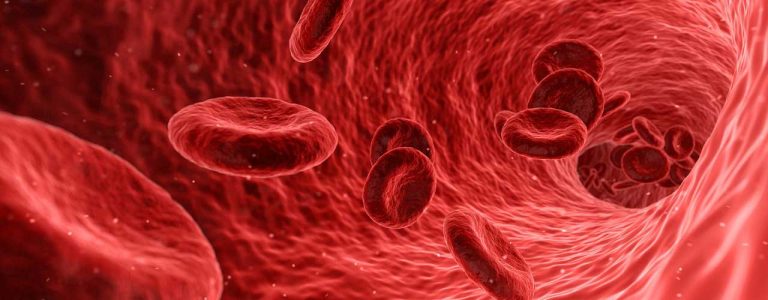What Is Meth?
Meth is short for methamphetamine (also sometimes referred to as crystal meth) and it is an extremely addictive form of stimulant that elicits euphoric feelings and produces an increase in energy. It directly affects the central nervous system and comes in the form of a white crystalline powder.
Meth causes dopamine to be released into the brain at an increased rate, and since dopamine is connected with feelings of pleasure and an individual’s feelings of desire and reward, this may explain why meth abuse occurs, since people wish to continue to feel the pleasurable feelings that meth was able to allow them to feel.
It does not produce an odor, and it dissolves quickly into both alcohol and water. It is described as having a bitter taste, which might also explain why some meth users opt to combine it with alcohol (to improve the taste).
Get help: Rehab Southern California
Crystal meth is typically used as a recreational drug; however, in modern times it is still occasionally used as a type of treatment for ADHD (Attention Deficit Hyperactivity Disorder) as well as to treat obesity. In the past, it has been used for the purpose of losing weight and to abate depression.
Where Did Meth Come From?
According to NIDA (the National Institute on Drug Abuse), meth was created at the beginning of the 20th century, and it came from the related parent drug, amphetamine. Traditionally it was used in bronchial inhalers and nasal decongestants.
Crystal meth is made from a key ingredient contained within cold medicines known as pseudoephedrine. Typically crystal meth is produced in Mexico and also in a variety of labs within the US.
What Is The Legal Status Of Meth?
The US Drug Enforcement Administration has listed methamphetamine as a Schedule II stimulant under its classification system. Moreover, this means that it is only legally obtainable via a non-refillable medical prescription.
As mentioned previously, it can be used as a form of treatment for ADHD, as well as a type of short-term medication for weight-loss treatment. However, these legal uses are rare in terms of approved prescriptions, and the doses that are approved are low.
What Is The Legal Status Of Alcohol?
Alcohol is legal to sell and distribute in the US. Generally, most states will require users to be at least 21 years of age (though this may differ slightly from state to state).
US law governs and outlines how alcohol is sold and distributed throughout the US, in particular with regards to the amount of alcohol that drinks may contain. Things such as how many beverages are sold may largely depend on the license holder’s discretion and judgment. However, alcohol intoxication is often punishable by arrest if the person’s behavior gets out of hand as a result of binge drinking.
What Is Alcohol?
Alcohol is a form of psychoactive drug that often leads to drug dependence and alcohol use disorder, and it can potentially exacerbate pre-existing mental health conditions. Alcohol intoxication and binge drinking are considered normal side effects of alcohol usage. This can, however, lead to a fatal overdose, and can cause other significant health risks.
Alcohol is a liquid substance that increases the likelihood of contracting diseases and the WHO (World Health Organization) estimates that it is a major causal factor in the development of over 200 different diseases.
For instance, drinking alcohol can lead to the development of cardiovascular diseases, and the development of certain forms of cancer; it can create alcohol dependence, it can lead to alcohol poisoning, liver cirrhosis, mental health issues, behavioral disorders, and many other issues.
Why Do People Mix Alcohol With Meth?
Methamphetamine and alcohol use tends to occur for a few reasons. Firstly, meth users may decide to mix alcohol and meth or other drugs in order to get around the bitter taste that meth can have. They may decide to do so in order to increase the intensity of the symptoms that are pleasurable and often experienced with meth use. They may also be used together in order to cancel out or lessen the negative aspects of each other.
For instance, users may decide to drink alcohol first in order to feel the initial calm feeling or ‘buzz’ that can be felt after having a drink, but they may then decide to take meth in order to become sober again.
Other users may choose to take the two drugs the other way round, with the thought process being that alcohol will help to lessen or slow down the potential overwhelming feelings of meth, such as a quick heartbeat, or an influx of energy that’s hard to manage.
Elsewhere, alcohol might also be used in an attempt to avoid or eliminate the feelings of anxiety that a meth user might encounter after having taken the drug,
The Dangers Of Mixing Alcohol With Meth
Since the two may be used in tandem with each other in a bid to alleviate the negative feelings or symptoms that each drug can generate, the user may end up getting stuck within a dependency cycle between the two drugs. They may desperately seek both drugs on a continual basis, in order to avoid the withdrawal symptoms.
According to studies into the dangers of mixing alcohol and meth, it was found that alcohol can potentially interfere with meth metabolism, which in turn can lead to a greater amount of meth ending up in the user’s bloodstream.
Moreover, if alcohol is found to increase the levels of meth found within the user’s blood, it can actually greatly increase the stimulation effects that can occur within the brain and heart of the user, as a result of taking meth. In addition, using meth and alcohol together can also lead to an increased heart rate.
By using meth and alcohol together, users may develop cardiovascular disease; they may experience seizures, high blood pressure, an inability to make decisions, and they may also be at an increased risk of contracting AIDS, HIV, Hepatitis B, and Hepatitis C. They may be at risk of having children who have birth defects, and they may also be at an increased risk of feeling suicidal.
The Effects of Meth and Alcohol on the Body
The Effects of Meth on the Body
After a person has taken meth, they may experience short-term effects such as broken sleeping patterns or difficulty sleeping, a loss of appetite, increased blood pressure (also known as hypertension), an increased heartbeat, an irregular heartbeat, and a general increase in energy levels and feelings of alertness.
In the long-term, meth users may experience feelings of paranoia and hallucinations, they may become more aggressive or have violent tendencies, they may suffer from insomnia and feelings of confusion, they may experience severe weight loss, they may lose teeth or contract dental infections, or they might start developing sores on the skin (which can originate if they continuously pick at their skin or scratch themselves frequently).
Elsewhere, they may also experience problems with memory, cognitive abilities, and difficulty learning new things. They may develop poor coordination skills, they might have problems showing emotion in a normal way, and in more severe cases, they may also be unable to reverse the damage done to the body and mind after a sustained period of abstinence from the drug.
The Effects Of Alcohol on the Body
The short-term effects of alcohol on the body can include alcohol intoxication and alcohol poisoning. Alcohol intoxication is not generally severe in terms of its effects on the body, and will most likely result in the user experiencing a ‘hangover’ (which is a combination of dehydration and the body actively trying to remove all of the toxins consumed).
However, it is possible for users to overdose on alcohol and require medical attention as a result. Alcohol depresses the central nervous system (which is the opposite of what meth does to this part of the body).
Alcohol poisoning can cause users to experience a faster heart rate, dangerous breathing patterns, extreme body temperature fluctuations, and in extreme cases, total body shutdown.
Therefore, the effects of alcohol abuse on the body differ slightly from that of meth abuse. The effects include nauseous feelings and a compulsion to vomit, difficulty making decisions, impaired judgment, a loss of memory, a decrease in blood pressure, sweating profusely, motor coordination issues, slurred speech, blurred vision, dehydration, problems with breathing, slower reaction times, the risk of falling into a coma, and death.
In the long-term, alcohol abuse can lead to liver problems, pancreatitis, problems with sex, can increase the chance of contracting various different types of cancer, and much more.
Furthermore, if a person is left on their own while unconscious as a result of alcohol poisoning or intoxication, they could potentially start choking on their vomit and may die as a result. Moreover, if the user has also used meth during this drinking session, their bodily functions may be even further impaired, meaning that their body cannot react in a normal manner, and this may put them at an even greater risk of death.
Meth And Alcohol Withdrawal
Methamphetamine withdrawal symptoms may include a severe loss of energy, psychosis, feelings of paranoia, a condition known as anhedonia (not being able to feel pleasure), a loss of motivation, extreme depression, feelings of apathy, a decrease in a person’s sex drive, nightmares, disorientation, an increase in the person’s appetite, feelings of anxiety or irritability, meth cravings, exhaustion, and a condition called psychomotor retardation.
Alcohol withdrawal symptoms might initially include experiencing headaches, anxiety, insomnia, nausea, and shakes. Once more time has passed, the symptoms may also include hallucinations, extreme sweating, a high fever, higher blood pressure, an increased heart rate, and general feelings of confusion.
How Long Do Meth and Alcohol Remain In Your System?
In regards to meth, it can vary greatly in terms of how long it will remain in the body, and it may also depend on the quality of the drug tests employed. For instance, on average it is suggested that it can remain in the blood between one to three days after initial use, one to four days in the person’s saliva, between one to seven days in the person’s urine (depending on how much they took), and it can potentially remain within the person’s hair for up to 90 days.
Once again, depending on how much the individual has consumed, this will determine how long the alcohol will remain in the person’s system. For instance, if the person has consumed a single shot of a spirit, they can expect the alcohol to remain in the system for about an hour. If the person drinks a large glass of wine, they can expect the alcohol to remain for about three hours, but if they consume several drinks within a session, they may potentially have alcohol in their system for many hours.
What To Do if Someone Is Overdosing on Meth and Alcohol
The best course of action in the event of an overdose is to immediately call 9-1-1 and seek emergency medical attention. An overdose or a severe case of alcohol poisoning can potentially be dealt with and the effects can be reversed if medical professionals are able to get to the patient in time.
If a person is overdosing on alcohol, it is best to listen as closely as possible to the instructions given over the phone by the healthcare professional. Moreover, it is recommended to place the patient in a position where they are sitting or are upright partially while on the ground. This means that if the person is unconscious and they start to vomit, it is then easily possible to roll the person over and prevent them from choking on their vomit.
Treatment for Co-Occurring Alcoholism and Meth Addiction
Treatment for drug and alcohol dependence may differ depending on which drug the user is addicted to. There will be different requirements and approaches to treatment for both, so it’s important to fully understand which addictions the person has, and then decide how to best approach them.
Help for polysubstance abuse or any other kind of substance abuse is never far away. Rehab treatment providers such as Cornerstone offer the opportunity to beat meth and alcohol addiction, as well as addictions to other drugs through state-of-the-art substance abuse treatment and a range of other invaluable resources.
It is important to find a specific treatment provider that works for you, in the sense that they can offer you all of the features, resources, and support you require in order to make your recovery process a success.
Cornerstone provides support for alcohol abuse and other drug abuse through its luxury rehab facility, offering people addiction treatment, access to physicians around the clock, access to counseling and family therapy, advice on a range of different treatment options and professional treatment advice, access to medication, and offering an addiction recovery process that is catered to your individual needs.
To learn about the treatment options available to you, as well as how Cornerstone can help you with alcohol and meth abuse, click here.






